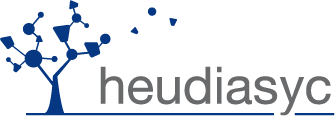eg:tal
Differences
This shows you the differences between two versions of the page.
| Next revision | Previous revision | ||
| eg:tal [2010/11/02 16:50] – créée ptrigano | eg:tal [2010/11/02 16:59] (current) – ptrigano | ||
|---|---|---|---|
| Line 1: | Line 1: | ||
| - | Automatic Natural Language Processing (T.A.L.) | + | ==== Automatic Natural Language Processing (T.A.L.) |
| + | {{images: | ||
| - | Research Team | + | == Research Team == |
| Philippe Trigano, Sid Lamrous, M.C. Villain, J.P. Deloison, F. Bourcier, A. Fougères, | Philippe Trigano, Sid Lamrous, M.C. Villain, J.P. Deloison, F. Bourcier, A. Fougères, | ||
| (the following have also collaborated with the project as part of their doctoral studies: Bénédicte Talon, Chantal Enguehard, Christophe Demko, François de Bertrand de Beuvron, Didier Baltazart, Jean-Christophe Planès, Susan Parker). | (the following have also collaborated with the project as part of their doctoral studies: Bénédicte Talon, Chantal Enguehard, Christophe Demko, François de Bertrand de Beuvron, Didier Baltazart, Jean-Christophe Planès, Susan Parker). | ||
| - | Project objective | + | |
| + | == Project objective | ||
| The project is concerned with the automatic treatment of meta-languages (professional languages) for analysing texts or requests for compliation into natural language, as well as for the generation of information in natural language. | The project is concerned with the automatic treatment of meta-languages (professional languages) for analysing texts or requests for compliation into natural language, as well as for the generation of information in natural language. | ||
| - | Context | ||
| - | Please note that links are to pages written in French | + | == Context == |
| This research has been conducted within the LCS (Language Understanding and Synthesis) section, which was created especially for this subject. We have decided to limit the number of professional languages (meta languages that are particular to specific domains) in order to limit the complexity. The differant aspects of the project are tackled by their own individual sub-projects respectively. These projects are organised using a common approach that is based upon the semantic treatment of knowledge (as opposed to a syntactic approach). The enviroments have been developed, each one with its own base that also complements those of the others: DOCAL (casual and primitive semantics base), CLOSUP (logical environment) and ITI (automatic indexation and automatic extraction of knowledge). The DOCAL environment is used for the profound comprehension of texts. It requires a preceeding study of the corpus text to be analysed, as well as an in-depth modelling of the knowledge contained in the domain. CLOSUP is used to provide interfaces for databases and expert sytems. Finally, ITI is an environment that is particularly well suited to large corpus texts, permitting a comprehension that is shallower than DOCAL, but with the advantage of having a simpler modelling of the linguistic knowledge. In effect, a certain number of automatic knowledge acquisition tools permit considerable time-saving when modelling a domain. | This research has been conducted within the LCS (Language Understanding and Synthesis) section, which was created especially for this subject. We have decided to limit the number of professional languages (meta languages that are particular to specific domains) in order to limit the complexity. The differant aspects of the project are tackled by their own individual sub-projects respectively. These projects are organised using a common approach that is based upon the semantic treatment of knowledge (as opposed to a syntactic approach). The enviroments have been developed, each one with its own base that also complements those of the others: DOCAL (casual and primitive semantics base), CLOSUP (logical environment) and ITI (automatic indexation and automatic extraction of knowledge). The DOCAL environment is used for the profound comprehension of texts. It requires a preceeding study of the corpus text to be analysed, as well as an in-depth modelling of the knowledge contained in the domain. CLOSUP is used to provide interfaces for databases and expert sytems. Finally, ITI is an environment that is particularly well suited to large corpus texts, permitting a comprehension that is shallower than DOCAL, but with the advantage of having a simpler modelling of the linguistic knowledge. In effect, a certain number of automatic knowledge acquisition tools permit considerable time-saving when modelling a domain. | ||
| - | The constituant projects | + | == The constituant projects |
| * DOCAL (Philippe Trigano, Bénédicte Talon) is a project that permits the study and realisation of diverse techniques for the analysis of natural language by use of semantic models that are often derived from psycholinguistic methods. 1988-1993. | * DOCAL (Philippe Trigano, Bénédicte Talon) is a project that permits the study and realisation of diverse techniques for the analysis of natural language by use of semantic models that are often derived from psycholinguistic methods. 1988-1993. | ||
| Line 26: | Line 27: | ||
| * HIRON (Jean-Christophe Planès) is a project that concernes the creation of an analysis and automatic generation of texts system for the monthly situation enquiries of the Banque de France. 1990-1993. | * HIRON (Jean-Christophe Planès) is a project that concernes the creation of an analysis and automatic generation of texts system for the monthly situation enquiries of the Banque de France. 1990-1993. | ||
| - | Références | + | == Références |
| Baltazart D., P. Trigano : " | Baltazart D., P. Trigano : " | ||




